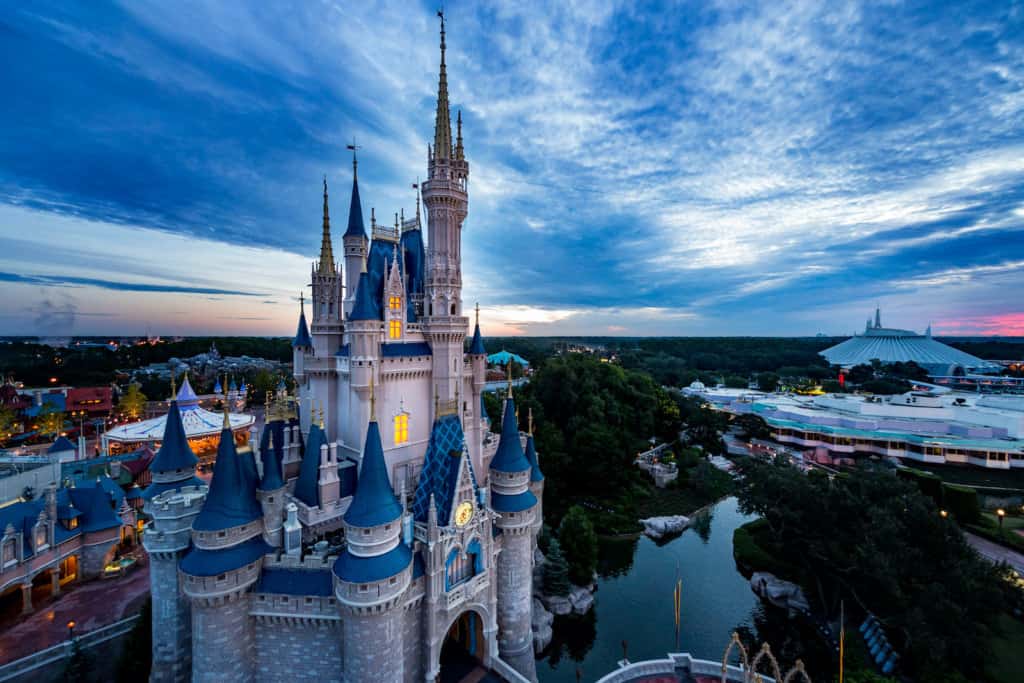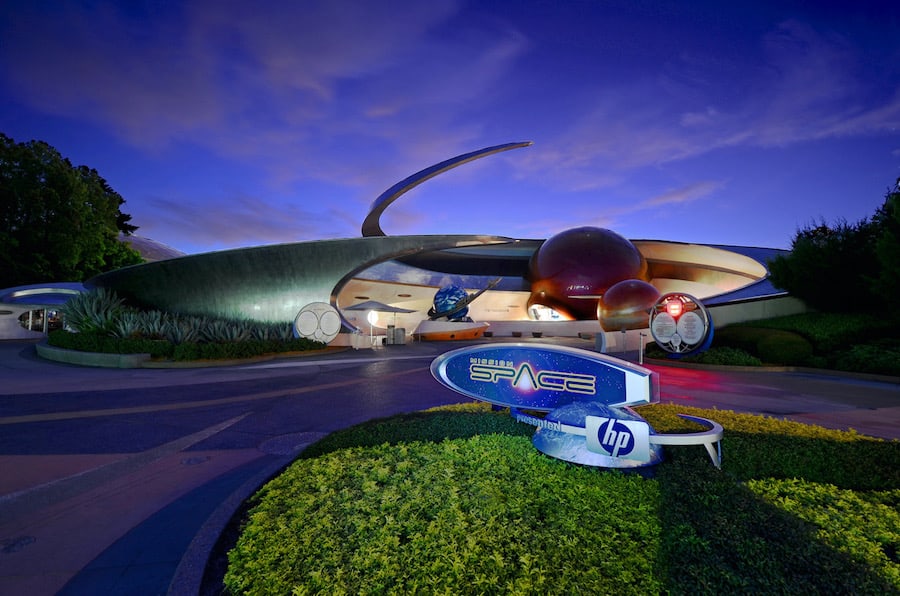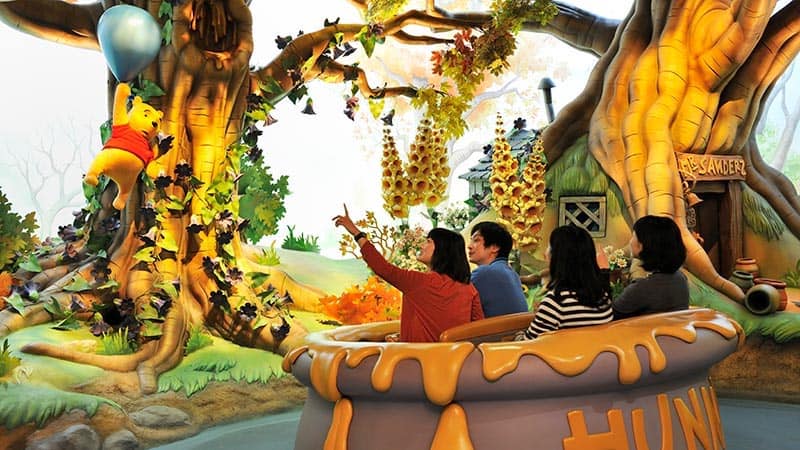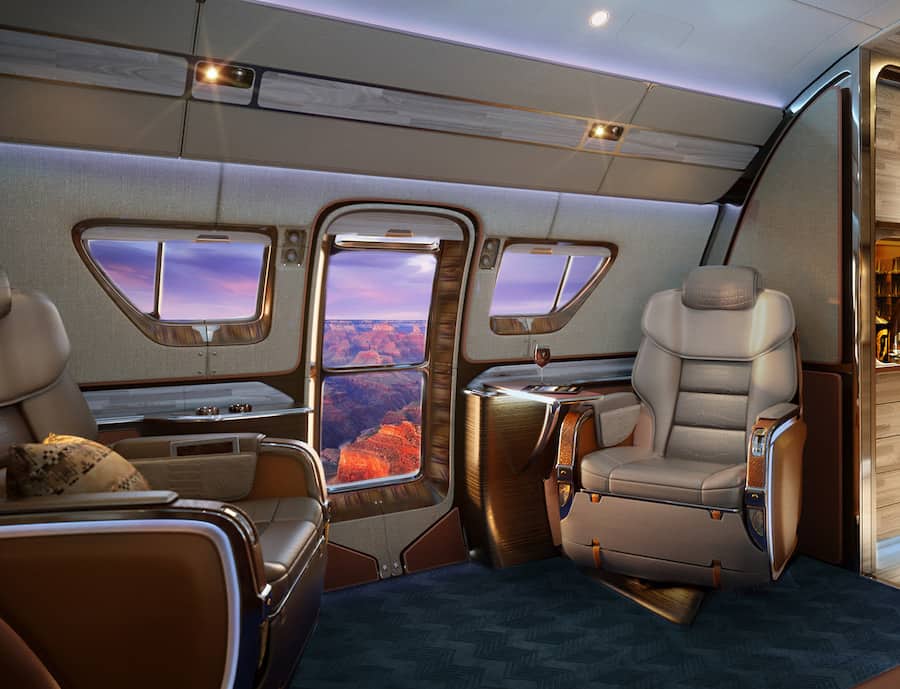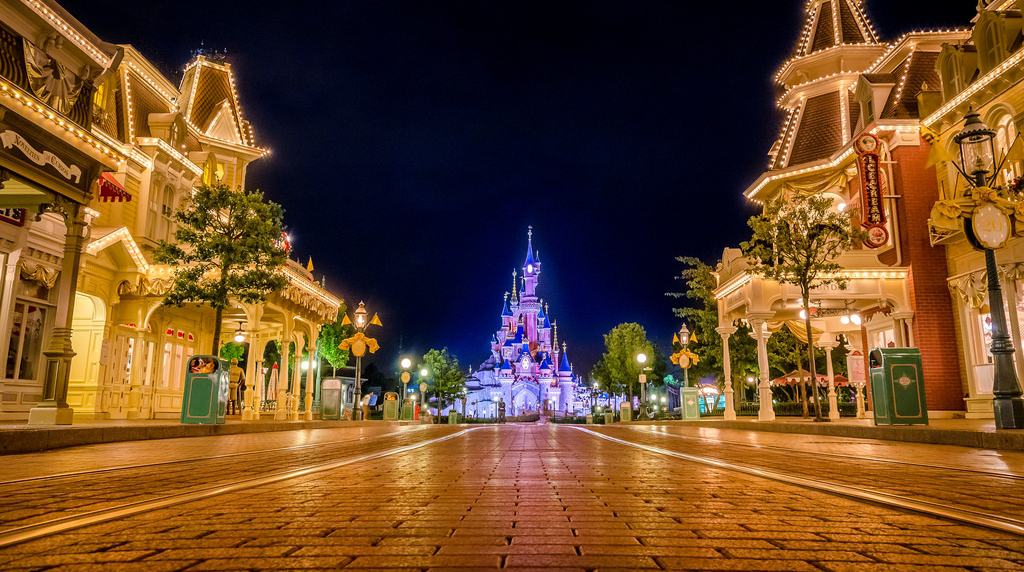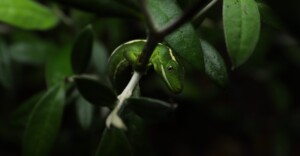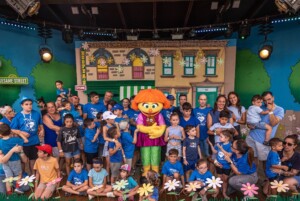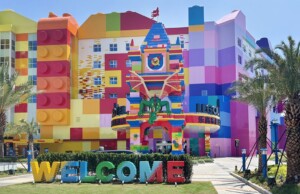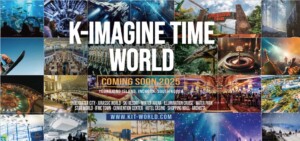Eddie Sotto‘s design studio, SottoStudios/LA, creates immersive experiences for the world’s most prestigious brands, including Ferrari, Porsche, Aston-Martin, Paramount Pictures, Microsoft, Google, Disney, Universal, Wynn Resorts, Irvine Company and more.
Perpetually pushing the envelope, he has recently convened a new venture: a think-tank to address the challenges posed to the experiential industries by COVID-19.
The pandemic has presented new challenges in terms of policing clients, both spatially and in terms of health. Sotto’s contention is that shared experiences require guest-centric, seamless solutions that transcend technical, operational and medical expertise, to go further.
Sotto’s career has been characterised from the start by a refusal to take ‘no’ for an answer and a penchant for taking on projects that would be daunting to others. As a child, he called himself a ‘Disneytologist’ and wrote to the iconic company with suggestions for rides.
Disney’s legal team responded with a cease and desist letter, forbidding him from using the term. He called them, instead, to share his ride ideas. They informed him that anything he could think of, they had come up with already, and told him not to call again. Undeterred, he built a scale model of Disneyland from card.
“That’s not to say I wasn’t crushed,” he told Blooloop. “But I just kept trying.”
Eddie Sotto and a passion for Disneyland
Immersion fascinated him, and would become a key part of his own process:
“I grew up in a suburban community, in Orange County, the California stereotype of suburbia: the big cars, the swimming pools. My father was a pool contractor, so we had a pool. Going to Disneyland was a seamless transition to another world. It fascinated me, as a kid; it was an alternative to the day to day of where I grew up.”
The same was true of visiting a movie lot, or Fox Studios. Sotto’s grandfather, a movie agent, would take the young Eddie to Universal, where he would go to the Munster’s house, meeting some of the actors. His uncle was an actor and had been on the TV shows in the sixties.
Today, Sotto approaches projects with the meticulous eye of a movie set designer.
“All of that make-believe was very powerful; almost like a magical illusion,” he says
Sotto’s parents infused him with confidence and determination:
“They said, ‘If you really want to try to do something, there’s nothing that prevents you from doing that.’ My family was somewhat entrepreneurial; they made their own way here from other countries, and were able to do things by trying, and not taking no for an answer.”
Working as an Imagineer
Eddie Sotto has a photograph of exactly where he was standing when, aged five, he told his friend that when he grew up he planned to create rides for Disneyland.
During his 13 years at Walt Disney Imagineering, Sotto directed the creation of half a billion dollars worth of projects, including Main Street USA at Disneyland Paris, the Indiana Jones Adventure, the design of Tokyo Disneyland, and the first-ever trackless dark ride.
As Senior VP of Concept Design, he ran a think-tank in the 1990s that he called the Concept Development Studio, developing disruptive concepts such as smart wireless toys, augmented reality coasters, online worlds, and resort concepts.
Further projects included the ground-breaking “Mission: Space” Attraction for EPCOT Center, the ‘Media as Architecture’ facade of ABC’s Times Square Studios, and the award-winning ‘Encounter’ Restaurant at the Los Angeles International Airport.
The importance of the experience
Famously, Eddie Sotto coined the phrase: ‘Fear minus death equals fun,’ to describe the appeal of roller coasters:
“Surviving is what makes it fun,” he says. “Making it through. It’s a rite of passage. I think of everything as an experience. It’s part of validating the fact that you’re not just surviving, but you’re thriving.”
For an eight-year-old, Disneyland’s Matterhorn Bobsleds, a pair of intertwined steel roller coasters between Tomorrowland and Fantasyland, modelled on the Matterhorn in the Alps, are a route to that rite of passage.
“We cheated,” says Sotto. “We said, ‘You’re not really an Olympic bobsledder, but we’re going to take you up to this mountain, and you can conquer it at the 48-inch height requirement. You’re going to be able to look at it and say, ‘Daddy, Daddy, I did that.’
“Well, you didn’t really do that, but since at Disneyland, anything is possible, yes: you did do it. Or you survived the burning city with the pirates or the waterfalls. And it’s that fear minus death. It’s having the dread and then conquering the dread.
“If you look at the most successful therapy for anxiety disorder, it’s exposure therapy. Disneyland is a mild version of that: of what the analysts call ‘holding the snake.’ So, ‘fear minus death equals fun’ is about feeling alive. It’s the reassurance of everything being okay; it’s that ‘wow’ you get after surviving pirates and mountains and earthquakes.”
Creative problem-solving
Eddie Sotto’s capacity for creative problem-solving informs his vision.
“I’m interested in problem-solving combined with personal fantasy,” he says. “If the problem is something that no one else has, like the COVID-19 thing, I just think that that’s the greatest. To me, that’s the Matterhorn.”
And conquering the Matterhorn requires a team. “When Frank Wells [President of The Walt Disney Company from 1984 to 1994] had the goal of climbing the Seven Summits, he brought professional climbers along.
I never lean on my own understanding in finding a solution. I bring in other people that are experts and then guide them toward ideas
“Similarly, I never lean on my own understanding in finding a solution. I bring in other people that are experts and then guide them toward ideas. That way, I get the complete satisfaction of working with people much smarter than me. Which is always wonderful.”
It is the process of creation; the design aspect, and the background exploration underpinning it, that captivates Eddie Sotto. He has designed Ferrari and Aston Martin showrooms, and a Porsche experience.
Eddie Sotto on the joy of making
To Sotto, it is work, rather than possessions, that spells happiness:
“It’s the joy of making; of doing things for others and watching their reactions. I love to sit on a bench, no one knowing that I had anything to do with it, watching people enjoy something in a park.”
Or building something game-changing, such as the first trackless ride:
“I quit Disney partly because the management at the time did not see the future of investing in more trackless rides.”
It was clear to him that trackless rides were the future of every great Disney attraction.
“We were met with, ‘Well, maybe. Maybe not.’ So I quit in 2000. Now, thank goodness, 20 years later, they did it. They actually did it. But to me, it’s about trying to do things ahead of your time. Today, what is the next ‘trackless ride’ that will be the solution to COVID-19? It’s a brave new world.”
Immersive environments
Immersion is key to Sotto’s process, he says.
“I do immersive environments for anyone and everyone, not just outdoor entertainment. It’s liberating because you don’t have to take all the government regulations, or capacity issues into consideration. And so I put together an immersive environment here in the studio.”
Throughout the video call, his background is his creation, Sky Ranch One:
“We’re flying on the Sky Ranch One. I want to be in another world, even when we’re talking. I don’t want to be in my studio.”
He is currently working on creating a beautiful yacht for a client, while quarantined in his home:
“I put together playlists before I start a project. For this yacht, those playlists need to follow nautical culture, so I put together all these sea shanties. I know many Irish pub songs now about being aboard sunken ships, and chasing mermaids!
“I’ve been playing these ditties for three weeks, 24/7; and my family has been coming in and demanding I shut it off. So I put the headphones on now, and play my sea shanties, enjoy a Guinness, and just inhabit this world of wooden ships and iron men.”
Eddie Sotto and Knott’s Berry Farm
In order to create an immersive environment, Sotto immerses himself in its creation, a process he developed at Knott’s Berry Farm:
“Knott’s is not like Disney. It’s the greatest beginning because it’s the opposite of Disney. And you have to train yourself to be the designer not of what you want, but of what works in that environment.
“They have a historic ghost town, with buildings filled with antiques. I would go and sit in these little ghost town buildings filled with beautiful 19th century American West poker tables, and roulette wheels out of real saloons. You touch them, you close your eyes and go back in time.”
“I realized there was no music to it, so – this was 1979; I was probably 21 years old – I would make those playlists, and go in there with a cassette, and history books. There were beautiful daguerreotypes of people in saloons, and I would look at them, and wonder, ‘What was that guy doing five minutes before, or after?’”
This was laying the foundations of how he would continue to create environments that allowed people to forget their ordinary existence, and lose themselves.
Designing a feeling
“Everyone that trained me came out of the film business,” says Sotto. “I never went to college. Everything I do is more of a set than a piece of architecture. It obeys the logic of set design, even if it isn’t themed.
To that end, every good set designer takes the script, which is emotion. You design feeling. You say, I’m taking this feeling. I need to know what the public was doing just before they walked in, like an actor, and just before they left, and what is going to happen emotionally in this space.
“I would do this with historic pictures: what were these people’s problems? What were they riding on before they walked into the saloon? And when you design a room, you do that.
When a guest comes to a theme park, they don’t have a script. That guest is the protagonist
“I spoke with a production designer doing a film about a CIA agent, played by Gene Hackman. Describing how he designed the room where the character operated, he said, ‘I even went down to the point of his stress level, and put stomach medicine in the pockets of his costume.’
“It wasn’t something that was on camera – it was about a deeper level of immersion. When a guest comes to a theme park, they don’t have a script. That guest is the protagonist. How do I put the stomach medicine in their pocket when they’re walking me down Main Street?
“All I have as tools are the subliminal music, the smell of fudge in the air, the oversized lollipop that scales them down, makes them feel like a child again.”
Authentic experiences
Many designers, Sotto says, don’t do this:
“They’re just looking at other theme park designs. They’re looking at the photocopy, not the original. What I loved about spending time in the UK, especially in London, is that London is not the photocopy – or it is of the Renaissance, or of the 300 years before that. But people seem to cherish the origin.
View this post on Instagram
“The partners of James Purdey and Sons, gunshop to royalty, were more than happy to spend the afternoon with me in the rifle room looking at the Crimean hunting photographs, and the logs of the dimensions from the trigger finger to the armpit of some Lord or Lady, to make sure that the stock was the right size.
“And that’s what I was taught by Herbert Ryman and the Disney artists. They travelled. Herbert Ryman designed movies and wasn’t satisfied. He said he needed to go to China to be a better designer. As a perpetual student, I missed none of this. Living the design before you execute the design is the way to do it. And people want to sense the details.”
Everything matters
Eddie Sotto’s Twitter account (@boss_angeles) is full of little details from Main Street:
“People go crazy over those little Easter eggs because it reinforces the fantasy. There’s a secret relationship that goes on between the theme park designer and the fan. And that secret relationship is that your mind starts to doubt that you’re in that ‘world’ after a little while. You start free-associating, looking for that window, the air conditioners sticking out of Main street.”
“You desperately want to be reassured that the fantasy isn’t fantasy; that you’re really there. So the more details our team puts in, so that every time you look, you go deeper with us.
“Even the manhole covers we featured were loaned by The Smithsonian. So the deeper you go, the more we reward you for inspecting the fantasy. It’s like hitting a tennis ball back over the net. It’s like, ‘I bet this isn’t from 1890,’ and BOOM: we hit the ball back and go, ‘Yes, it is.
“I love that. I love that there’s more magic, and more. And magic is merely the impossible depth that exists in these worlds. But we have to be relevant. We have to put that magic, that depth where it’s going to matter. We don’t create stories that nobody wants to hear. The real story is your survival. It’s what you tell your friends.”
Elements of impressionism
Balancing the meticulous attention to detail and deep immersion is an element of impressionism, says Sotto.
“I think one of the biggest mistakes theme designers make is spelling it all out. One of the scriptwriters at Disney wrote a script about the riverboat once, and they told you every little thing about riding around that river. The fans hated it.
“The Impressionists were so popular, after all, because they let you finish the painting with your brain. Herbert Ryman told me once that my drawings were far too detailed; that they should be ‘specifically vague’.”
It’s the humanity that goes into the design that contributes to a wonderful guest experience
In short, let people participate in the design:
“Democratise those lilies. Monet’s paintings let you paste in that perfect idea you have of a lily pad from your childhood. And this is where problems arise, when people use the photocopy of another theme park or try to just copy Disney. They’re short-changing their audience.
“When Herb Ryman was doing Liberty Square, in the Revolutionary War area of Walt Disney World, he said, ‘I could have done any bridge. But I got out the history book on the one Paul Revere rode over, and I’m going to use that bridge. It’ll have imperfections in it.’ It’s the humanity that goes into the design that contributes to a wonderful guest experience.”
Complicated simplicity
“I remember meeting one of the masters of luxury, Arrego Cipriani of the Hotel Cipriani and Harry’s Bar, in Venice.
“I was sitting in Venice, Italy, and there he was, 83 years old, the epitome of Italian luxury and finery in the white vest coat. When I asked him, ‘What is luxury, Mr Cipriani?’ he replied, ‘Eddie, luxury is complicated simplicity’
View this post on Instagram
“Complicated simplicity. Great luxury is frictionless, but you can do that at all economic levels. He gave me some examples. He talked about how they had made a study of wine glasses, and that the wine glasses in the restaurants are small.
“A wine glass that is small prevents you from cranking your neck back in an inelegant way. You’ll also drink more by using your hand to tip the glass, versus using your head. It takes great observation. It takes being a student of humanity, almost an anthropologist.”
Combining the artificial and the real
All this expertise goes into the alchemical crucible of Eddie Sotto’s immersive world-building.
“If I have spent 30 years doing anything, it’s gathering off the ground those autumn leaves that are left around. People say, ‘Sweep them away!’ But walking on those leaves crunches you back to another memory; another time.
“So it’s this combination of the artificial, the real, the detail, the humanity; it’s about allowing people to bring their own nostalgia to the story. It takes all these things and being a bit of an entertainer, too. I’m Sicilian; we’re a little over the top. You must have that lack of fear of putting it out there.”
This is the toolkit he brought with him from Disney, and to which he has been adding ever since, as his studio disrupts the design industry by beginning, as he puts it, at the end: with the ‘Wow’.
The industry has seen a growing trend towards immersive experiences where the boundaries between the imaginative space and the real world are blurred, and where escape from reality is possible.
Eddie Sotto on seamless experiences
In terms of immersion, Sotto says:
“I believe there’s a giant opportunity in the home. At some point, people are going to say, ‘It’s not worth going through all these safety procedures to go out to one of these places, so, in the near term, my 4k TV monitor is better than going to NASCAR or a concert. I have Dolby Atmos in my home.’
“There is going to be this war between the outdoor and the indoor world; between VR and where AR goes, as far as these technologies becoming less obtrusive and better. But as long as dysfunctional families exist, people are going to want to get away from home.
“The national parks are seamless. Beaches are seamless. They pay off, as total experiences. There are challenges for some of these other manufactured environments, that are owned by people who can get sued with liabilities. There are a lot of governmental regulations to deal with that are also going to have an effect.”
The guest experience after COVID-19
Re-imagining the post-COVID guest experience is now a matter of urgency:
“At this moment in time, I think great shared experiences are an endangered species,” says Eddie Sotto. “Bringing hospital behaviour into those escapes only reminds people they’re in the real world. If you’re at a theme park and you’re wearing masks, you’re distancing and disinfecting everything, it doesn’t exactly create a carefree world.”
“What these theme parks are dependent upon is that the rules and behaviours of the real world are gone, and you have permission to be a child again. It’s not ideal if you’re spending hundreds of dollars to be carefree if you’re then constantly reminded that sneezing could kill someone.
“So I have set up my own think-tank to address what the guest experience 2.0 should be. Someone has to decide how technologies and safety protocols can be used in a way that will preserve these shared, quintessential experiences.
“We had to adapt to terrorism, and we did, but now we have to adapt to something else. “A spoonful of sugar makes the medicine go down”. Maybe we should apply that to this problem.”
SottoStudios
Sotto founded SottoStudios in 2004. Since then, it has developed and executed unique breakthrough experiences for both private individuals, and the world’s most iconic brands.
Offering innovative solutions that encompass VR, AR, brand strategy, entertainment and industrial design and digital strategy, the company also enables brands to adapt to the post-COVID-19 landscape.
Starting with a repeatable “wow” experience and weaving the technology in, is better long term than reactive “band-aids” – technical solutions that erode the desire to return
Detailing the function of the company he has set up, Sotto says:
“It is a think-tank which addresses what makes a person show up. It seeks to define the ‘wow’; to design to achieve it, and then layer those technologies in.
“Right now, the airport is a hardware store in the lobby of every terminal, because those are the band-aid solutions that stuck. No-one asked, ‘What would make travel wonderful for people?’ I just looked at the news today. It predicted a four-hour wait to get on a plane.
“This is because they’re going to just apply all the COVID process on top of the existing security. This is not the way to encourage air travel. Starting with a vision and applying the technology is better than starting with paranoia and applying band-aids.”
